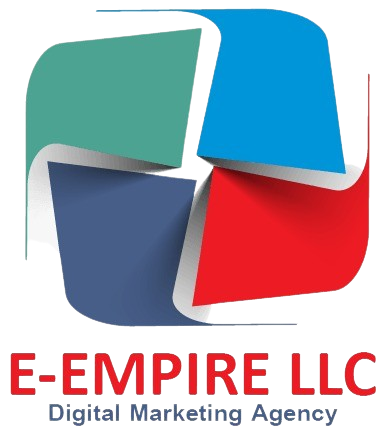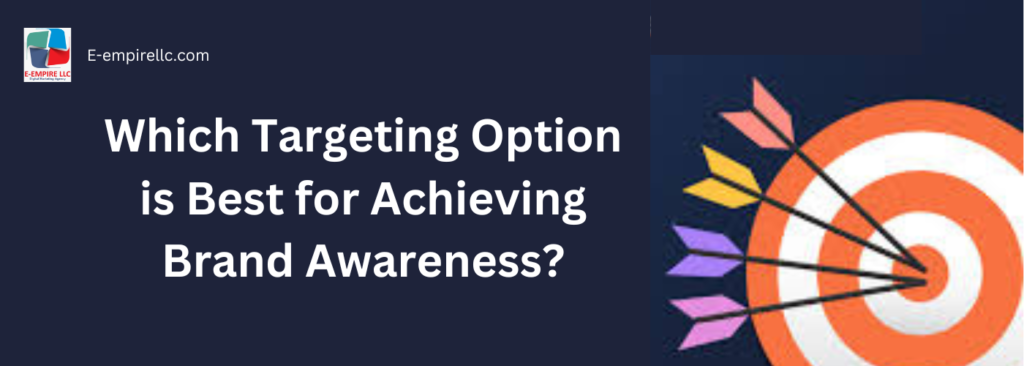Have you ever thought about why some brands are easier to remember than others? In the digital world, brand awareness is more than just having a website; it’s also about being memorable and at the top of your audience’s thoughts. But which targeting option is best for achieving brand awareness? Let’s take a closer look at the different targeting methods and find the best ways to make your brand stand out.
Table of Contents
ToggleWhat is Brand Awareness
Before we explore targeting options, let’s clarify what brand awareness means. Brand awareness is the extent to which consumers are familiar with the qualities or image of a particular brand of goods or services. It goes beyond mere recognition; it’s about recalling the brand when thinking of a product category and associating it with specific values and emotions. High brand awareness can lead to increased trust, customer loyalty, and, ultimately, sales.
Key Targeting Options for Brand Awareness
Let’s understand key targeted options that brands can consider to reach their audience.
Custom Affinity Audiences
Custom affinity audiences are groups of people created based on specific interests, demographics, and behaviors. These groups allow brands to target individuals who have demonstrated a strong interest in areas relevant to the brand.
Pros: Highly customizable and specific, enabling precise targeting on platforms like Google and Meta. For example, a fitness brand can target users who frequently visit health and wellness websites.
Cons Requires significant data and can be complex to set up effectively.
Lookalike Audiences
Lookalike audiences are created by analyzing your existing customers’ characteristics—such as demographics, interests, and behaviors—and then finding new audiences who share similar traits. This option uses website traffic data and customer lists to show ads to potential similar customers.
Pros: Efficient for expanding your reach to potential customers who are likely to be interested in your brand. For instance, if you run a vegan restaurant, you can target people who resemble your regular customers in their eating habits and lifestyle choices.
Cons: The effectiveness depends on the quality and size of your initial customer data.
Demographic Targeting
This approach involves focusing on specific audience characteristics such as age, gender, income, education, and other demographic factors. In this way, brands can tailor their marketing efforts to reach specific groups that are more likely to be interested in their products or services.
Pros: Broad reach and straightforward implementation. For example, a luxury watch brand may target high-income males aged 30-50.
Cons: Less precise in understanding individual consumer behavior and preferences.
Geographic Targeting
Focusing on specific locations, such as countries, states, cities, or neighborhoods.
Pros: Particularly effective for businesses with a physical presence or those aiming to dominate specific local markets. A local coffee shop, for example, can target ads to people within a 5-mile radius.
Cons: Limited reach if the target area is too narrow.
Behavioral Targeting
This involves targeting based on user behavior, such as previous purchases or website interactions.
Pros: Highly relevant and personalized, increasing the likelihood of conversion. An online bookstore might target users who have previously bought mystery novels with ads for new releases in that genre.
Cons: Privacy concerns and the need for extensive data collection.
Contextual Targeting
Placing ads on web pages or platforms that are relevant to the brand’s products or services.
Pros: Ensures that the brand message is seen in a relevant context, increasing its impact. For instance, an outdoor gear brand could place ads on travel and adventure blogs.
Cons: Limited control over the specific audience that sees the ad.
Which Targeting Option is Best for Achieving Brand Awareness
When choosing the best targeting option for brand awareness, consider the following factors:
Audience Reach:
The ability to reach a large and relevant audience is crucial. Custom affinity and lookalike audiences are excellent for expanding reach without losing relevance.
Relevance:
Ensure that your targeting aligns with your brand’s message and the interests of your audience. Behavioral and contextual targeting are particularly effective in this regard.
Data Availability:
The ease of accessing and utilizing data can make or break your targeting strategy. Platforms like Google and Meta provide tools for creating and managing custom audiences.
Cost Efficiency:
Balancing budget and return on investment is essential. While broad targeting options like demographic and geographic targeting are generally more affordable, they may not provide the precision needed for high-impact brand awareness campaigns.
Recommended Strategy
Custom Affinity Audiences are the best targeting option for brand awareness because they help people become familiar with your brand. You can make very relevant campaigns and have a big impact by tailoring your audiences based on their interests, behaviors, and demographics. This can help you reach more people and be more successful if you use it with other strategies like lookalike audiences and contextual targeting.
For instance, if you want to promote a new line of eco-friendly products, you can make a custom affinity group of people who read a lot of environmental blogs and follow sustainability influencers. This makes sure that your ads reach people who are interested in your type of product and are also likely to connect with your brand more deeply.
The Benefits of Custom Affinity Audiences on Different Platforms
Custom affinity is the best targeting option for achieving brand awareness. Here are the benefits of different platforms.
Google:
For ads in Display, Discovery, Gmail, and Video, use custom target segments. You can reach people with specific interests and behaviors by adding relevant keywords, site links, and app downloads.
Meta (Facebook and Instagram):
Custom Audiences lets you meet with people who are already interested in your brand. You can make ads that are very relevant and specific to people by getting data from your CRM or using the Meta pixel to keep track of people who visit your site.
Linkedin:
Use the Website Demographics tool to find out about the career backgrounds of the people who visit your site. This can be especially helpful for business-to-business brands that want to raise recognition in certain job functions or industries. A software company can go after IT experts and business leaders in related fields.
How to Measure Brand Awareness?
Measuring brand awareness is as crucial as building it. Here are some effective ways to measure the success of your brand awareness efforts:
-
Website Traffic
- Direct Traffic: An increase in direct traffic (people typing your URL directly into the browser) indicates higher brand awareness.
- Referral Traffic: Check the sources of referral traffic to see if your brand is being mentioned and linked to on other websites.
-
Social Media Metrics
- Mentions and Tags: Monitor how often your brand is mentioned or tagged on social media platforms. Tools like Hootsuite or Brand24 can help track these mentions.
- Follower Growth: An increase in followers on platforms like Facebook, Twitter, and Instagram can indicate growing brand awareness.
-
Search Volume Data
- Branded Searches: Use tools like Google Trends or Google Search Console to track the number of searches for your brand name over time.
-
Share of Voice
- Competitive Analysis: Compare your brand’s online presence and mentions against your competitors to see how much share of voice you hold in the market.
-
Media Coverage
- Press Mentions: Track mentions of your brand in news articles, blogs, and other media outlets. Tools like Meltwater or Cision can help monitor media coverage.
-
Engagement Metrics
- Content Engagement: Analyze likes, shares, comments, and other forms of engagement on your content to gauge how well your audience is connecting with your brand.
-
Brand Lift Studies
- Ad Platforms: Platforms like Google and Facebook offer brand lift studies to measure the impact of your advertising on brand awareness and perception.
Conclusion
You need a strategic method to target to make people aware of your brand. Custom Affinity Audiences work especially well because they can connect relevant brands with interested customers. You can make your brand more visible and memorable by using this approach along with behavioral targeting, lookalike audiences, and contextual placements.

